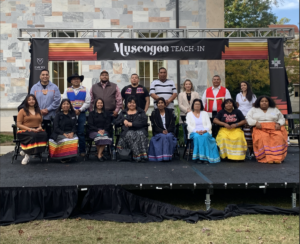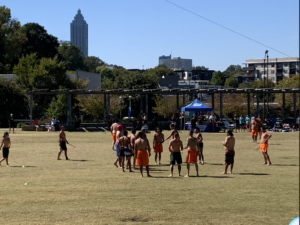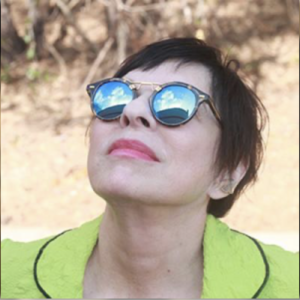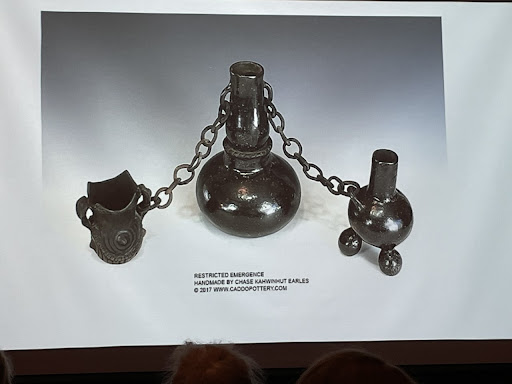 Emory University hosted its second series of Indigenous Language Path listening sessions on October 27th and 28th at Emory’s Oxford and Atlanta campuses. The events culminated with the Muscogee Teach-In on the academic quad.
Emory University hosted its second series of Indigenous Language Path listening sessions on October 27th and 28th at Emory’s Oxford and Atlanta campuses. The events culminated with the Muscogee Teach-In on the academic quad.
Elected officials, spiritual leaders, teachers, and citizens of Mvskoke Etvlwv (Muscogee Nation) who flew from Oklahoma to their ancestral homeland in present-day Georgia for the listening sessions and teach-in. This process of community consultation and relational accountability guides the Indigenous Language Path Working Group as it takes next steps in its efforts to assimilate Emory to Muscogee knowledge through the original language of the land.
Dr. Iris PrettyPaint (Blackfeet), from the Native-led consulting firm KAI, facilitated the listening sessions at the Oxford and Atlanta campuses. The sessions began with a welcome and an acknowledgement of Emory’s history of Native removal and slavery from Dr. Greg McGongle, Dean of Religious Life and University Chaplain This segued into the purpose of the Listening Pathway Session: to create physical, visual, and digital reminders of Muscogee present, past, and future. The mission is to correct the “past tense” histories of Native people commonly taught in schools. This session continues the work started November 2021 to engage Emory’s campus in open dialogue and furthering the commitments of the land acknowledgement. During the Listening Sessions, leaders of Emory University asked students to provide input on how the Language Path can be refined to meaningfully honor Indigenous presence on campus. Reverend Chebon Kernell, a member of the Seminole Nation of Oklahoma and of Muscogee Creek ancestry, spoke of our responsibility to respect and honor the earth just the earth provides for us.
The Muscogee Teach-In began with welcome and opening remarks by leaders from both. This segued to traditional Mvskoke hymns by Muscogee elders. The language teachers shared traditional stories, such as why the opossum has a bare tail or how the animals divided the day and night. Each was told in Mvskoke with English translation in Mvskoke Language Preservation Program. This was followed by the Mvskoke Cultural Lab & Stories sponsored by Brittney Cuevas (owner of Four LOCV) and Denise Barnett (assistant for Four LOCV) where participants created corn husk people. The event ended with a Stomp Dance led by Rev. Chebon Kernell. Students and faculty were invited to join the Muscogee dancers in the final social dances.
This Indigenous Language Path is one of several efforts at Emory to indigenize the campus in ways that honor and respect Indigenous peoples and their rights within their ancestral homelands
Support Brittney Cuevas and Indigenous craftsmanship here.



